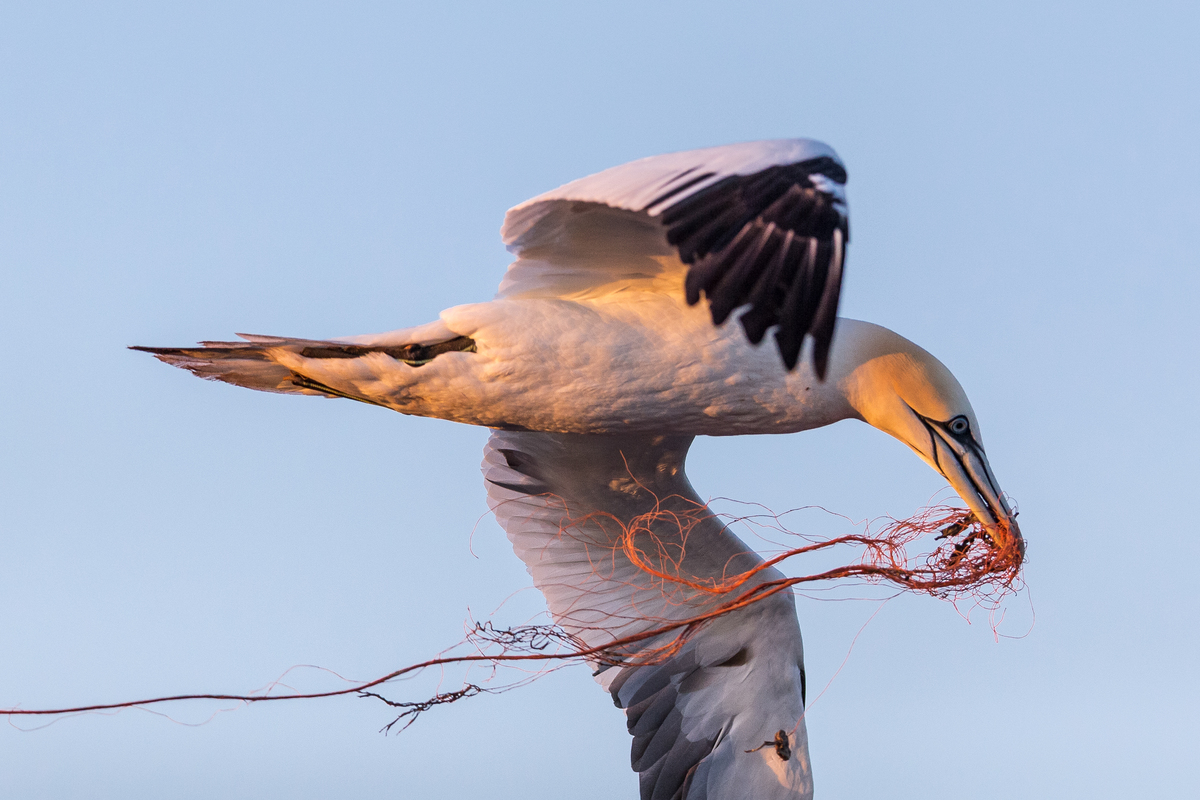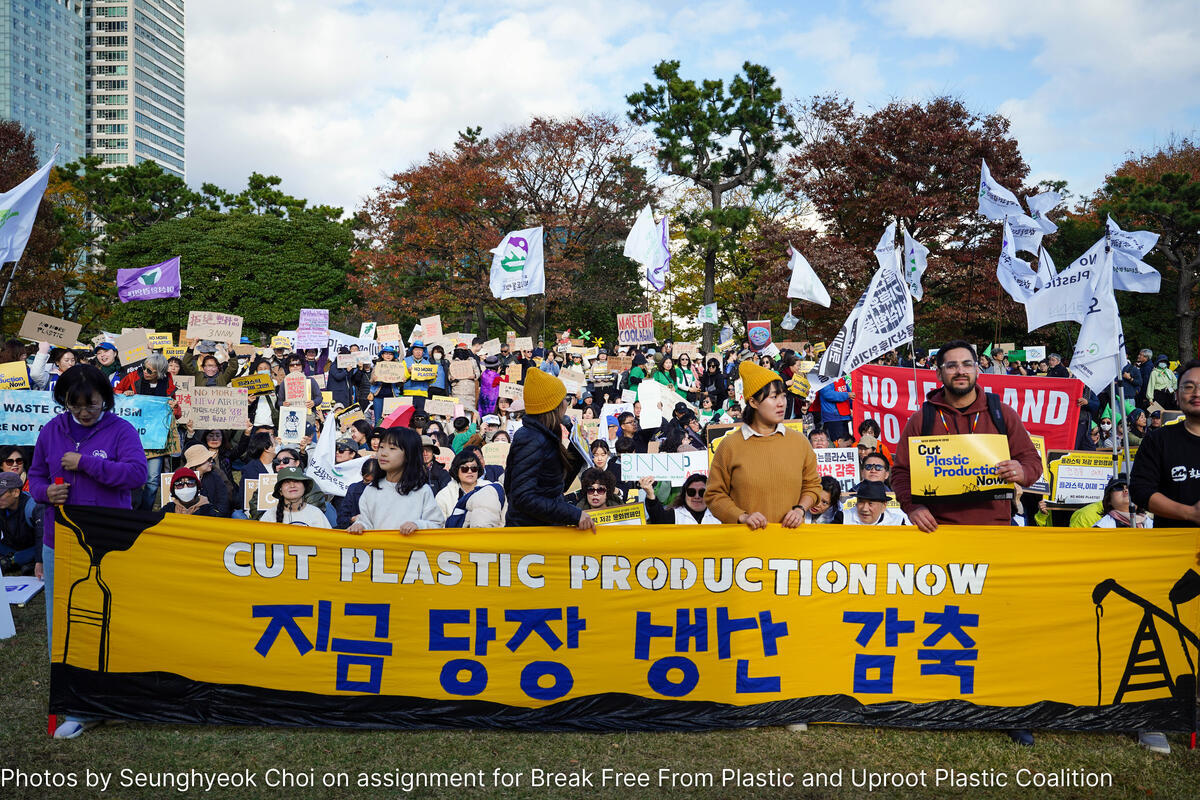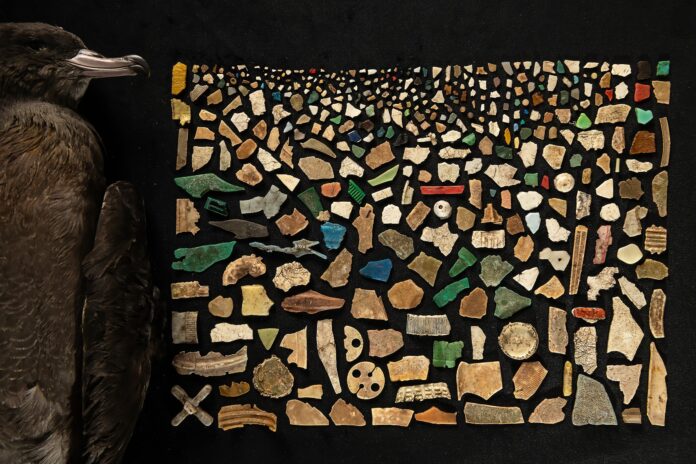World leaders are gathering for the final round of negotiations on the Global Plastics Treaty. A deceased seabird fledgling discovered on Lord Howe Island serves as a poignant reminder of the stakes involved.
This tragic image portrays the fatal consequences of plastic pollution on a young seabird. A flesh-footed shearwater fledgling lies motionless, with its beak surrounded by a collection of plastic pieces meticulously aligned in a rectangular shape.
Bottle caps, bread tags, a balloon tie. When this juvenile bird was discovered deceased on the shores of Lord Howe Island, a total of 403 plastic items were found in its digestive system.
The photograph, named “A Diet of Deadly Plastic,” received recognition at the Wildlife Photographer of the Year awards in the category of Oceans: The Bigger Picture.
The photographer, Justin Gilligan, hopes that it sparks crucial conversations.
“We deposit at least 8 million tons of plastic into our oceans annually. No place is immune to this peril, not even the deepest ocean depths or remote, pristine regions like the waters surrounding Lord Howe Island – a scenic haven situated between Australia and New Zealand.”
– Justin Gilligan
Plastic’s Consequences on Oceans, Wildlife, and Human Health
Although saddening, the fate of this shearwater is not an isolated incident. Over 75% of adult flesh-footed shearwaters breeding on Lord Howe Island have plastic remnants in their digestive tracts.
For the fledgling birds, this percentage has reached 100% in certain years.

Shearwater chicks begin ingesting plastic fragments at a young age as they are fed by their parents. The birds mistakenly consume the plastic pieces, mistaking them for food or small pumice stones that aid in digestion.
“Shearwaters start ingesting bits of plastic from an early age as they are fed by their parents. The birds mistake the plastic for prey and small pieces of pumice stone, which the birds eat to help digestion.”
– Justin Gilligan
The plastic crisis affects every corner of the world, from the deepest ocean realms to the tallest mountain peaks.
Furthermore, plastic pollution is harming not only our environment but also our bodies, with microplastics even detected in our blood, placentas, and breast milk.
While we are aware of the detrimental impact of plastics, if production continues at the current pace, plastic production could triple by 2050.
Continuation of Global Plastic Treaty Negotiations
Since 2022, countries have been engaging in negotiations for a Global Plastic Treaty. The final round of discussions, the INC5, is scheduled to take place in Busan, South Korea from November 25 to December 1.
Despite positive progress over the years, the Treaty negotiations have faced constant challenges from lobbyists representing fossil fuel and petrochemical industries attending each INC meeting.

A robust and ambitious Global Plastic Treaty could lead to a cleaner and safer world for all. But what exactly does an ambitious Treaty entail?
To address the plastic and climate crises, a Global Plastics Treaty must:
- End plastic pollution throughout the entire life cycle to safeguard the environment and human health
- Establish a legally binding target to reduce plastic production by at least 75% by 2040 to remain below 1.5°C for climate stability and to protect health, rights, communities, and the planet
- Eliminate single-use plastics, starting with the most harmful items like plastic sachets
- Ensure an equitable and inclusive shift to a low-carbon, zero-waste, reuse-centric economy
- Be grounded in a human rights-based approach that reduces disparities among individuals, prioritizes human health, preserves the environment, and upholds justice and community interests
INC5 represents our final opportunity to secure a robust Global Plastic Treaty. Leaders must demonstrate courage and embrace stringent measures to ensure the Treaty’s effectiveness.




